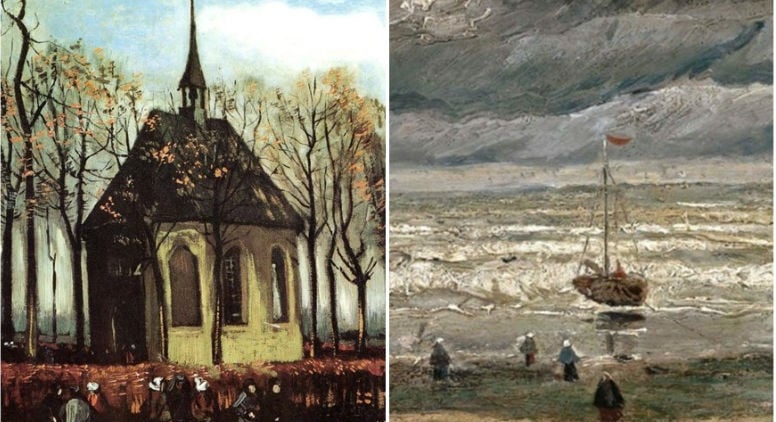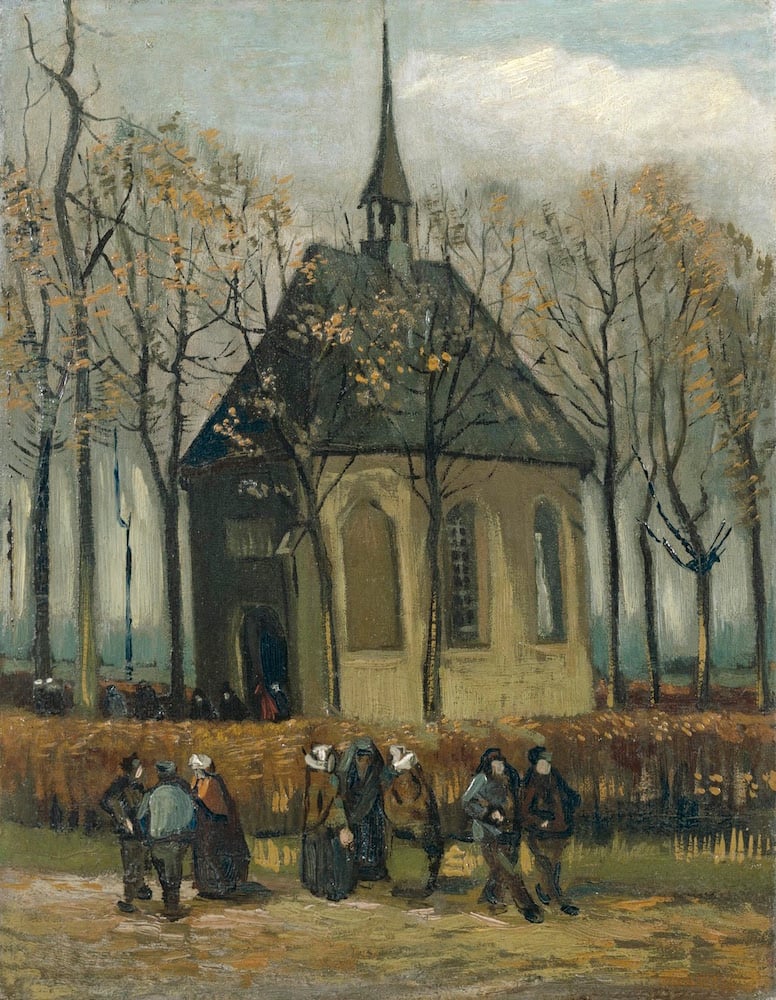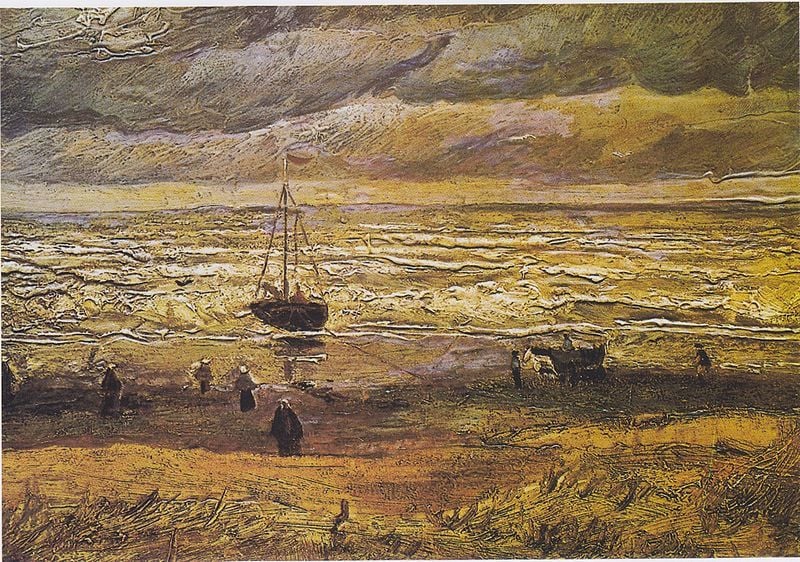On View
Missing Paintings Stolen by Mobsters to Return to Van Gogh Museum
They'll make a brief appearance in Italy first.

They'll make a brief appearance in Italy first.

“The paintings have been found!” Axel Rüger, director of the Van Gogh Museum in Amsterdam, exclaimed in a statement last fall.
Fourteen years after they were stolen, two landscape paintings by the iconic Dutch artist that were recovered in Italy in 2016 will go on view for a brief time in Naples. Starting February 6, the National Museum of Capodimonte will host the three-week show, featuring two Van Gogh paintings in the room next to Caravaggio’s Flagellation of Christ, before they are returned to the museum in Amsterdam.

Vincent Van Gogh, Congregation Leaving the Reformed Church in Neunen (1884-5). Courtesy the Van Gogh Museum.
Their retrieval was first announced by Giovanni Colangelo, the head anti-mafia prosecutor in Naples last September, following a major investigation into organized crime by a special team in the Italian public prosecutions department, the museum said.
According to the New York Times, the Italian prosecutor’s office said the works were found as they were investigating the Amato Pagano clan of the Camorra mafia family, which is associated with international cocaine trafficking.
Last January, they arrested several family members and suspected associates who were part of a drug ring, with contacts in Spain and the Netherlands, Colangelo told the Times.
One early December morning in 2002, before the museum was open, burglars used a ladder to access the museum, then broke through a window and grabbed the prized works.
One of the members arrested last January reportedly told police that the two paintings were in a house in the town of Castellammare di Stabia, near Naples. The house had at one time been occupied by Raffaele Imperiale, a businessman with alleged ties to the Amato Pagano clan.
An official who worked on the case said the paintings were found wrapped up in a cloth in a small hallway near a kitchen. Investigators had been trying to determine when the group obtained the paintings, and when they were moved to Italy.

Vincent Van Gogh, Seascape at Scheveningen (1882)
Courtesy the Van Gogh Museum.
According to a post on the Association for Research Into Crimes Against Art, the seascape “is considered to be one of Van Gogh’s finest masterworks.”
According to a release from the Van Gogh Museum: “The two works appear to be in reasonably good shape after their 14-year travels, although both are missing their frames and show a few signs of damage.”
Museum director Rüger said: “We’re especially grateful to the Italian authorities for achieving something we almost thought would never happen. We can’t wait to place the two lost works back in our museum’s collection.’
The National Museum of Capodimonte did not respond to artnet News’ request for comment.